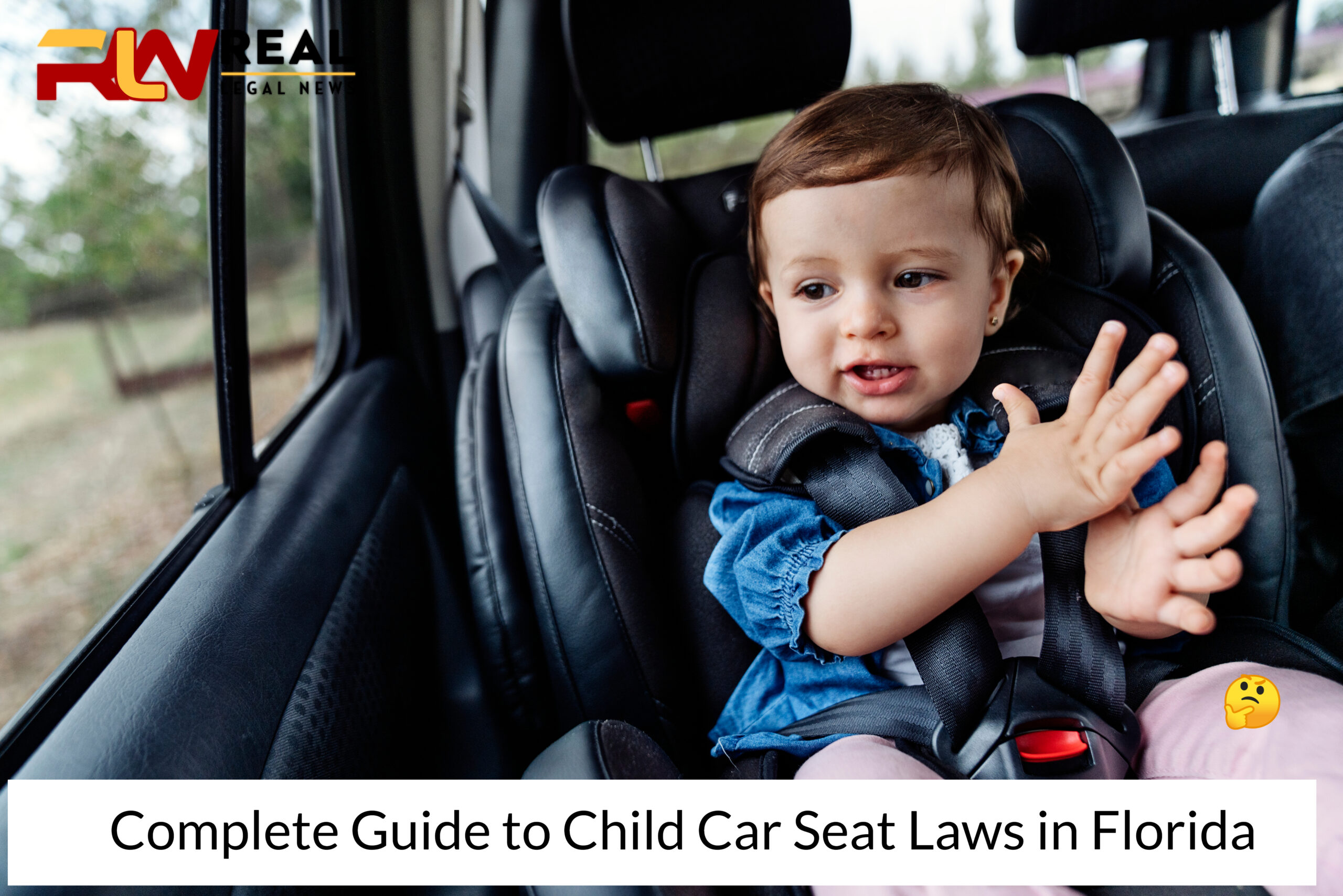Complete Guide to Child Car Seat Laws in Florida

In case you are a parent or a guardian and are seeking any info relating to the regulations on Florida Car Seat Laws, then this is the perfect place for you. Here is a complete insight into Florida’s car seat laws. The guide will essentially help you to understand the latest Florida state car seat rules, inform you of any errors in the regulations and give you safety recommendations that go beyond what the laws cover. The recommended safety measures will be easily applicable to your baby, toddler, or kid and it strives to ensure that your child escapes unscathed from any unfortunate car accident.
Florida law 316.613 mainly covers the following minimum requirements regarding the use of car seats.
- From birth through to age 3, all children must be within a manufacturer’s integrated child seat or a detached carrier device.
- Children that lie within the age group 4 and 5 should be transported in an integrated child’s seat, separate carrier device or a kid’s booster seat.
- Parents with children aged six years and above can opt for the continued use of booster seats or start the use of a standard seat belt.
The fines relating to the failure to follow these rules are namely, a $60,000 penalty and a 3-point deduction from your driver’s license. The court of law may also decide to waiver the points but instead enroll the lawbreaker to a child restraint safety program.
However, other parts of the regulation lack clear instructions that would enable parents to understand easily. For instance, the regulation states that all children aged five years and below must use a crash-tested, government-certified child restraint system. This law only gives the basic requirement to help you avoid getting a ticket. These safety standards are not in the best interest of your child. You risk endangering your child if you proceed to follow the given minimum requirements.
Height and Weight Requirements of the Florida State Car Seat Laws
Unfortunately, Florida law does not give clear instructions regarding the child’s height and weight when using car seats. It only provides references to the age limits. It, however, indirectly gives child weight limits for each type of car seat since it does require parents to utilize state-approved, crash-proof child restraint systems.
The American Academy for pediatrics and all state-approved car seats have set their guidelines based on infant’s, toddler’s or child’s height and weight and not their ages. It is preferred since children have different rates of growth. The height and weight recommendations try to ensure the safest possible outcome from a car accident. By heeding the recommendations offered by manufacturers, not only do you follow the Florida Laws, but you will also be protecting your child in the best possible manner. For details on this issue, click on the car seat safety guide.
When to Utilize the Rear Facing Car Seat in Florida
Florida car seat statutes do not provide clear information on when to use the rear-facing car seat, which is rather confusing for parents trying to comply with these regulations. No need for concern as every rear-facing car seat manual has specific guidelines regarding when to use it and the weight to halt its use. Following the manufacturer’s recommendations regarding rear-facing car seats ensures that you fulfill Florida car seat requirements as well as ascertain the safety of your child. Here a few basic standards you should know:
All infants should commence with a rear-facing car seat from when they leave the hospital. There is no specific age for when to change you, child, from a rear-facing car seat to a forward-facing one. The latest national guidelines only mention that you keep the child in a rear-facing car seat for the duration recommended in the manufacturer’s instructions. This is usually for as long as the child is still a toddler.
Children that are using rear-facing car seats are likely to outgrow them by around 20 to 25 pounds. You may be legally required to switch to a forward-facing car seat when the infant reaches this milestone. You may also opt to switch to a bigger rear-facing car seat that the baby should remain in until they attain 40 to 45 pounds. It may, in some cases, include children that reach four years old.
When to Utilize the Forward-Facing Car Seat in Florida
There are no clear Florida regulations regarding when to either start or stop the use of forward-facing car seats. Parents thus often end up following the guidelines given by manufacturers. Some manufacturers recommend the switch to a forward-facing car seat when the child attains 25 pounds. Others suggest a safer alternative of waiting for the child to attain 40 to 45 pounds, which is usually at the age of 4 years, before making the switch to forward-facing car seats.
When to Utilize a Booster Seat in Florida
The booster seat laws in Florida are usually lenient. They allow children aged four years and above to start using booster seats. Most professionals find this age too young to allow children to use booster seats. These experts, therefore, recommend the use of booster seats only when the children exceed the height and weight limits set for forward-facing car seats. The child should, therefore, be at least more than 35 inches and weigh over 85 pounds.
Before shifting from a forward-facing seat to a booster seat, ensure that your child first meets the following milestones.
- Your kid should have outgrown the forward-facing car seat’s internal harness.
- Your kid should weigh between 40 and 80 pounds and be at least 35 inches tall and not exceed a height of 4’9”.
- Ensure that your child is unable to sit with their backs against the vehicle seat while their knees are bent at the car seat’s edge without any slouching.
When Your Child Should Begin Using a Seat Belt in Florida
The child car seat laws in Florida allow children to switch from booster seats to adult seat belts once they reach six years old. This age may, however, be too young for most children considering their different rates of growth. Most adult seat belts are designed to contain adults weighing 165 pounds. Children that are not tall enough for the seat belt’s shoulder and lap portions to rest on them properly, face considerable risk if a vehicle accident happens. Improperly positioned lap seatbelt may cause serious injuries to a child’s spleen, intestines and liver during accidents. If the shoulder portion of the seatbelt is not properly positioned, the child neck may be overridden, resulting in spine fractures or paralysis due to whiplash.
Most safety professionals recommend the child should be at least 8 years old or 4’9” in height before the switch to adult seat belts. Some children may, therefore, have to reach 10 or 11 years before using the seat belts. Here are a few additional requirements that the children should meet.
- The child’s entire back must touch the back seat.
- The child’s knees should be bent at the seat’s edge with their backs not slouching over.
- The seat belt’s lap portion must cross as low as possible and preferably touch the thighs.
- The seat belt’s shoulder portion should rest over the clavicle that is between the neck and shoulder and not the neck.
- The child must be able to maintain this sitting position the entire time he/ she is in the vehicle.




















